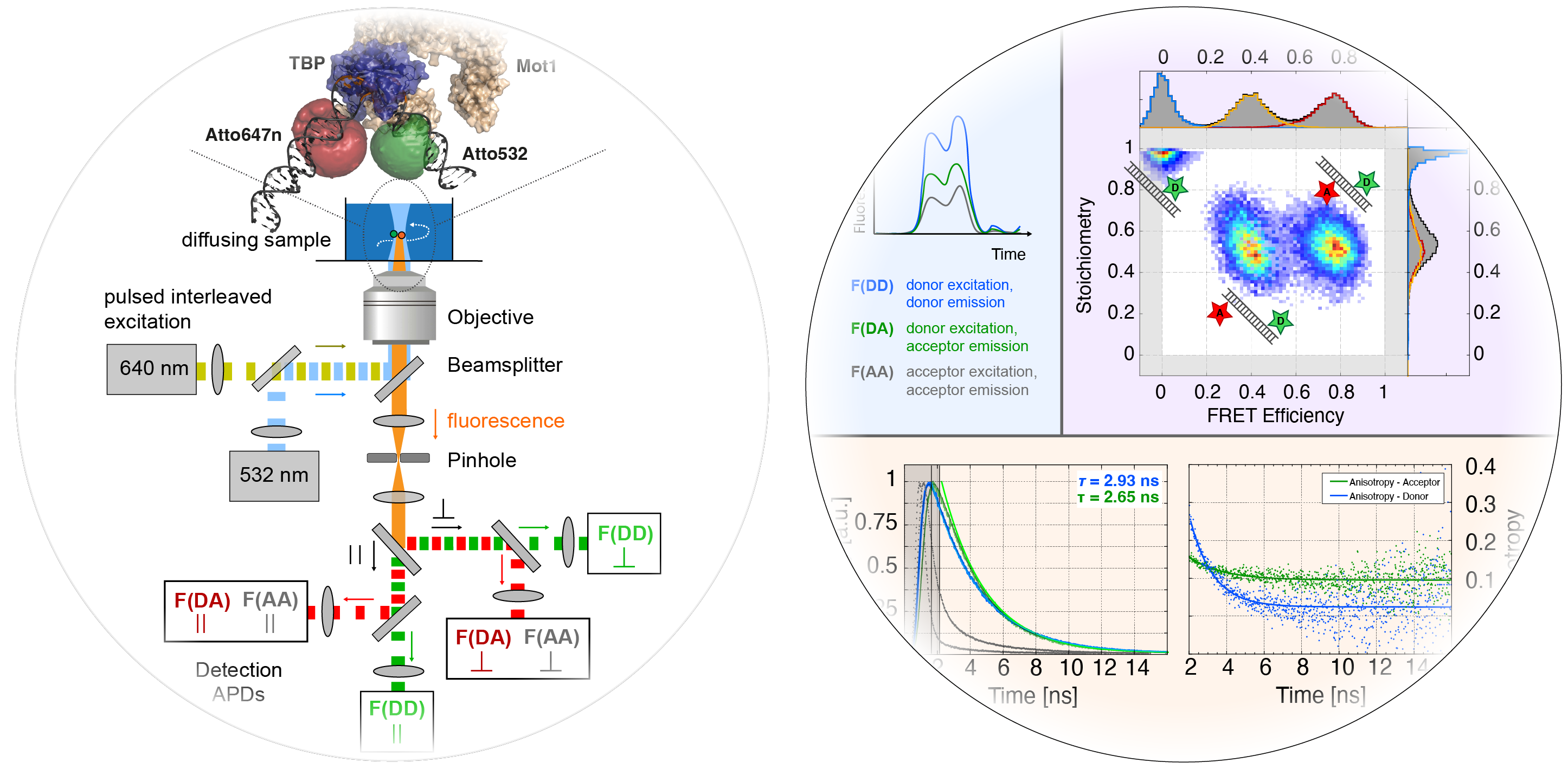MFD-PIE: Multiparameter Fluorescence Detection with Pulsed Interleaved Excitation
Multiparameter Fluorescence Detection (MFD) combined with Pulsed Interleaved Excitation (PIE) is a powerful technique for studying single-pair Förster Resonance Energy Transfer (spFRET) and other fluorescence-based measurements. This approach enables the simultaneous acquisition of multiple fluorescence parameters, providing a comprehensive picture of molecular interactions, dynamics, and structural changes.

Our MFD-PIE Setups
We operate two advanced MFD-PIE systems in our lab, each tailored for specific experimental needs:
- Two-color MFD-PIE setup: Designed for protein folding studies using spFRET between one donor and acceptor dye.
- Four-color MFD-PIE setup: Capable of utilizing four excitation wavelengths (488 nm, 561 nm, 640 nm, and 720 nm), this setup allows for complex multi-color experiments and the study of interactions in multi-component systems.
Key Features of MFD-PIE
Our setups integrate state-of-the-art hardware and software solutions to maximize data quality and experimental flexibility:
- Pulsed interleaved excitation (PIE): Lasers alternate at nanosecond intervals, ensuring precise temporal separation of donor and acceptor signals.
- Comprehensive parameter acquisition: Measurement of fluorescence lifetime, intensity, anisotropy, and more.
- High sensitivity: Optimized for single-molecule detection with minimal photobleaching and blinking artifacts.
- Advanced data analysis: Enables quantitative determination of FRET efficiencies, stoichiometries, and molecular dynamics.

Applications of MFD-PIE
These setups have been employed in a wide range of studies, showcasing their versatility and precision:
- spFRET studies: Quantifying distances between donor and acceptor fluorophores in biomolecules.
- Protein oligomerization: Determining stoichiometry and dynamics of small protein complexes.
- DNA origami investigations: Exploring DNA-DNA interactions and enzymatic ligation processes.
- Multi-color FRET analysis: Investigating complex molecular interactions using three- and four-color FRET schemes.
